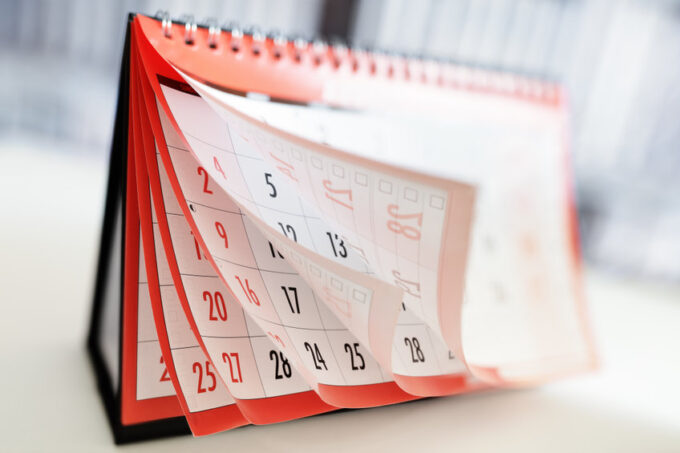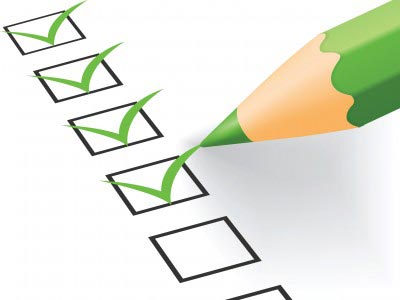12 Month Lawn Care Checklist
If you have a lawn to take care of, it sometimes seems like the work never ends and that you just keep mowing over and over again. But some of the maintenance tasks for keeping a lawn healthy change with the seasons. Mowing happens over several months and only slows down when the grass stops growing in winter. Other tasks, like core aeration, only need to happen once a year. Having a to-do list can help you keep track of each of these lawn care tasks and complete them at the right time of the year to help keep your lawn healthy.
12-Month Checklist
January
There's not much to do in the lawn this early in the year. During an unusually mild winter you may need to remove some weeds, but other than that there’s very little lawn maintenance. If you want to do some landscaping, you can plant dormant shrubs and trees bare root in the yard. This is also a good time for gardeners to order seeds so they have them on hand for spring planting.
February
This is a good time to get your mower out of storage and make sure it's running properly before mowing season starts. Taking the time to put new gas in the mower, replace the oil (if needed for your mower), sharpen blades, and clean or replace the air filter will help keep your lawnmower cutting like new. If the mower needs some more extensive maintenance or you just want to get it checked out by a professional, you can schedule a tune-up with our service department.
If you’re having trouble starting your mower, take a look at our article about “What Should You Do When Your Lawn Mower Won't Start?”
March
For a warm-season lawn, you'll want to apply a low-nitrogen time-release fertilizer about six weeks before the last frost date. You can look up frost dates here. Preemergent herbicides can be applied at the same time or a little earlier.
If the winter was particularly harsh this year, be sure to check out our article “How to Help Your Texas Lawn Recover After a Hard Winter” for more lawn care tasks to do in the spring.
April
With warmer weather, it's time to start checking for garden pests like aphids. Weeds can be pulled or treated with spot applications of herbicides. Keeping the lawn healthy is your best defense against disease, weeds, and pests. Sometimes, though, you’ll still have weeds grow in your lawn. Click here to read an article about your options for weed control.
May
You should aerate warm-season grass, which is the most common type of grass grown in Texas, once a year in the late spring or early summer. Core aeration reduces soil compaction. That gives grass roots more room to grow and makes it easier for nutrients and water to get down into the soil. And that all works together to make the grass healthy.
Pick a day to aerate when the lawn isn’t too dry or too wet. Ideally, the lawn should have been watered either by your irrigation system or rain a day or two before aerating. Late April or early to mid-May is typically a good time for this.
June
You can supplement spring fertilization with applications of slow-release fertilizer throughout the summer to maintain a green lawn. This is only recommended if you also irrigate the lawn since the lawn won’t need extra nutrients unless it’s also getting the water it needs to keep growing.
If your lawn has excess thatch (over ½ an inch), you can dethatch a warm-season lawn in early summer. You won’t need to do this every year. Aerating once a year and following guidelines for healthy lawnmowing will help reduce thatch buildup.
 July
July
Because warm-season grass is actively growing during the summer, it will need frequent mowing. Just make sure you don't mow too short. Though it might seem that mowing the grass super short would reduce how often you have to mow it can cause problems for your lawn.
Cutting grass too short can encourage weed growth and stress the grass plants. If you cut toward the high end of the recommended cutting range for your grass, it makes the grass more drought resistant. Also, make sure you don’t cut off more than 1/3 of the grass’s total height each time you mow.
August
Summer is a good time to start a new compost pile if you have space for it in your yard. Leaves, kitchen scraps, and garden trimmings can all be used to create an organic fertilizer.
You can use compost on your lawn as well as on your garden. To use compost on the lawn, spread a 1/4- to 1/2-inch layer over the lawn and then lightly rake it into the soil. If you’re also using a commercial fertilizer this year, skip one of those fertilizer applications and replace it with the compost.
September
You can keep applying lawn fertilizers, including chemical fertilizers and/or compost, into early fall. Continuing to fertilize in early fall helps prepare the grass for winter dormancy. Once the weather starts to turn cool and the grass growth slows down, then you’ll want to stop fertilizing.
October
October is a good month to clean up the lawn to get it ready for next year. As trees shed their leaves, make sure you rake them up or use a leaf blower or a vacuum/shredder to get the leaves off your grass. Letting leaves stay on the lawn blocks light from reaching the grass, which can affect how well it overwinters and increase the risk of disease. Cleaning up the lawn and garden before winter will help keep the plants in your yard healthy.
If you don’t have a blower or vacuum/shredder yet and want to know more about your options, check out our article “Get To Know Your Outdoor Clean-Up Tools: Shredders, Vacuums, Blowers, and Sweepers.”
November
As winter begins, you’re going to slow down on mowing and eventually stop mowing until next spring. Once that happens, it’s time to drain and store garden hoses and winterize lawn equipment. Before storage, you should clean mowers, trimmers, and other lawn equipment and drain the fuel or add a fuel stabilizer. Lawn equipment should be stored in a dry place and covered by something other than plastic, which will trap moisture. Click here to learn more about winterizing your lawn care tools.
December
There’s not much to do in the lawn during the middle of winter. However, if the weather is unusually mild, you might need to pull weeds or apply herbicides during the winter. Leaving winter weeds in the lawn will give them a chance to get established while the grass is dormant, then they will compete with your grass in the spring.
Using a lawn care checklist like this one will help you plan out your lawn care tasks each year. Keeping up with these yearly tasks will help keep your grass healthy, and help keep your yard looking fabulous.


